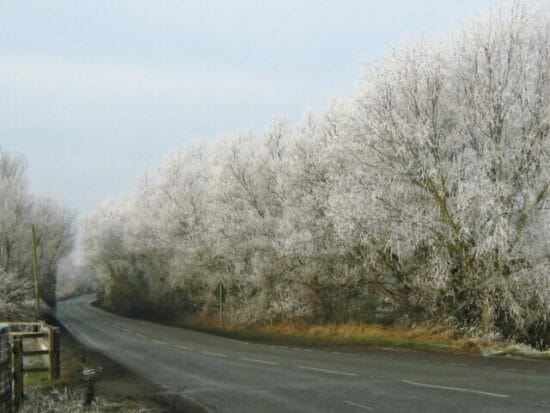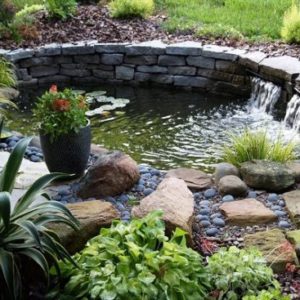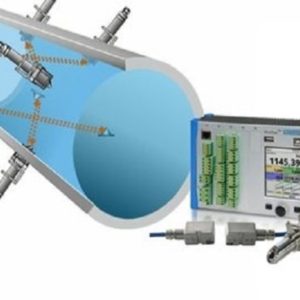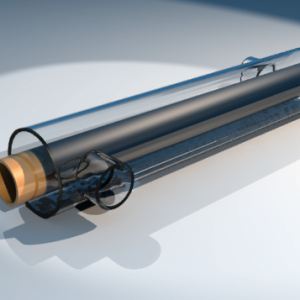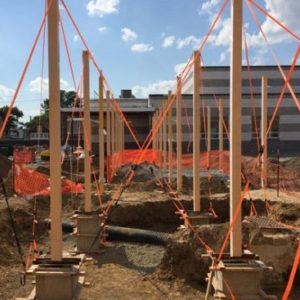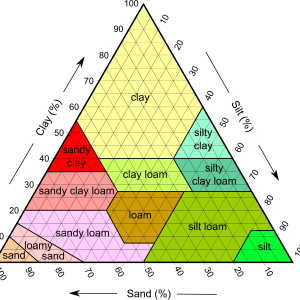No products in the cart.
E – 1241 Pavement Design in Seasonal Frost Conditions
$125.00
Courses Included
This publication presents criteria and procedures for the design and construction of pavements placed on subgrade or base course materials subject to seasonal frost action. The most prevalent modes of distress in pavements and their causes are listed. The detrimental effects of frost action in subsurface materials are manifested by nonuniform heave of pavements during the winter and by loss of strength of affected soils during the ensuing thaw period. This is accompanied by a corresponding increase in damage accumulation and a more rapid rate of pavement deterioration during the period of weakening; other related detrimental effects of frost and low temperatures are possible loss of compaction, development of permanent roughness, restriction of drainage by the frozen strata, and cracking and deterioration of the pavement surface. Hazardous operating conditions, excessive maintenance, or pavement destruction may result.
Course Outline
1. GENERAL
2. DEFINITIONS
3. FROST-SUSCEPTIBILITY CLASSIFICATION
4. ALTERNATIVE METHODS OF THICKNESS DESIGN
5. SELECTION OF DESIGN METHOD
6. LIMITED SUBGRADE FROST PENETRATION
7. REDUCED SUBGRADE STRENGTH
8. USE OF STATE HIGHWAY REQUIREMENTS
9. FREE-DRAINING MATERIAL DIRECTLY BENEATH BOUND BASE OR SURFACING LAYER
10. OTHER GRANULAR UNBOUND BASE COURSE
11. USE OF FL AND F2 SOILS FOR BASE MATERIALS
12. FILTER OR DRAINAGE REQUIREMENTS
13. STABILIZERS AND STABILIZED LAYERS
14. STABILIZATION WITH LIME AND WITH LCF
15. STABILIZATION WITH PORTLAND CEMENT
16. STABILIZATION WITH BITUMEN
17. SUBGRADE REQUIREMENTS
18. OTHER MEASURES TO REDUCE HEAVE
19. PAVEMENT CRACKING ASSOCIATED WITH FROST HEAVE
20. CONTROL OF SUBGRADE AND BASE COURSE CONSTRUCTION
21. BASE COURSE CONSTRUCTION
22. COMPACTION
23. USE OF INSULATION MATERIALS IN PAVEMENTS
This course will give you professional tools that will help you to understand the special technical and design considerations to use in pavement design in cold regions where frost conditions are a factor.
Description
This publication presents criteria and procedures for the design and construction of pavements placed on subgrade or base course materials subject to seasonal frost action. The most prevalent modes of distress in pavements and their causes are listed. The detrimental effects of frost action in subsurface materials are manifested by nonuniform heave of pavements during the winter and by loss of strength of affected soils during the ensuing thaw period. This is accompanied by a corresponding increase in damage accumulation and a more rapid rate of pavement deterioration during the period of weakening; other related detrimental effects of frost and low temperatures are possible loss of compaction, development of permanent roughness, restriction of drainage by the frozen strata, and cracking and deterioration of the pavement surface. Hazardous operating conditions, excessive maintenance, or pavement destruction may result.
Course Outline
1. GENERAL
2. DEFINITIONS
3. FROST-SUSCEPTIBILITY CLASSIFICATION
4. ALTERNATIVE METHODS OF THICKNESS DESIGN
5. SELECTION OF DESIGN METHOD
6. LIMITED SUBGRADE FROST PENETRATION
7. REDUCED SUBGRADE STRENGTH
8. USE OF STATE HIGHWAY REQUIREMENTS
9. FREE-DRAINING MATERIAL DIRECTLY BENEATH BOUND BASE OR SURFACING LAYER
10. OTHER GRANULAR UNBOUND BASE COURSE
11. USE OF FL AND F2 SOILS FOR BASE MATERIALS
12. FILTER OR DRAINAGE REQUIREMENTS
13. STABILIZERS AND STABILIZED LAYERS
14. STABILIZATION WITH LIME AND WITH LCF
15. STABILIZATION WITH PORTLAND CEMENT
16. STABILIZATION WITH BITUMEN
17. SUBGRADE REQUIREMENTS
18. OTHER MEASURES TO REDUCE HEAVE
19. PAVEMENT CRACKING ASSOCIATED WITH FROST HEAVE
20. CONTROL OF SUBGRADE AND BASE COURSE CONSTRUCTION
21. BASE COURSE CONSTRUCTION
22. COMPACTION
23. USE OF INSULATION MATERIALS IN PAVEMENTS
This course will give you professional tools that will help you to understand the special technical and design considerations to use in pavement design in cold regions where frost conditions are a factor.
- Learn frost, soil and pavement terminology applicable to design for seasonal frost conditions;
- Learn about bound bases and how they are employed in frost conditions;
- Learn the definitions of frost-susceptible soils;
- Learn how the design freezing index is determined and applied in design for seasonal frost;
- Learn how to design to accommodate varved clays;
- Learn the alternative methods of thickness design;
- Learn how to determine and apply the air freezing index;
- Learn about the reduced subgrade strength design method.

